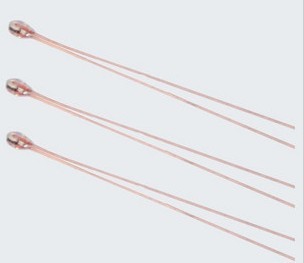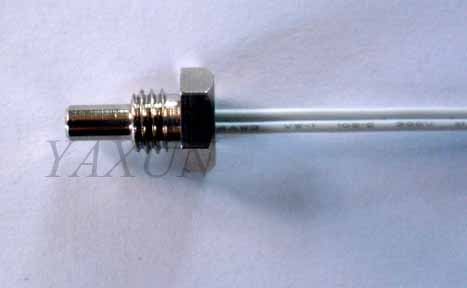Types Of Thermistors

Thermistor materials can generally be divided into three categories: semiconductors, metals and alloys, which are briefly described as follows.
Semiconductor thermistor material
Such materials include single crystal semiconductors, polycrystalline semiconductors, glass semiconductors, organic semiconductors, and metal oxides. They all have a very large temperature coefficient of resistance and high resistivity, and the sensitivity of sensors made of them is also quite high. According to the resistance temperature coefficient, it can also be divided into negative resistance temperature coefficient materials and positive resistance temperature coefficient materials. In a limited temperature range, the negative resistance temperature coefficient material a can reach -6 * 10-2/℃, and the positive resistance temperature coefficient material a can reach -60 * 10-2/℃. For example, barium ceramic is an ideal semiconductor material with positive temperature coefficient of resistance. The above two materials are widely used in temperature measurement, temperature control, temperature compensation, switching circuits, overload protection, and time delay. For example, make the thermistor thermometer, the thermistor switch and the thermistor thermometer, the thermistor switch and the thermistor delay relay error and so on.
This type of material has an exponential relationship between resistance and fluidity, so the temperature measurement range is narrow and the uniformity is poor.
Metallic thermistor materials
Such materials are widely used as thermal resistance temperature measurement, current limiter and automatic constant temperature heating element. Such as platinum resistance thermometer, nickel resistance thermometer, copper resistance thermometer and so on. Among them, the platinum side temperature sensor shows obvious characteristics of high precision and high stability in various media (including corrosive media). However, due to the scarcity and high price of platinum, their wide application is subject to certain restrictions. Copper temperature sensors are cheaper, but long-term use in corrosive media can cause significant changes in static characteristics and resistance. Recently, it has been reported that the copper temperature sensor can be used in the temperature range of -60~180℃ in the air medium. However, in order to measure the temperature at -60°C to 180°C for a long time and for a short time at 250°C abroad, a large number of nickel temperature sensors are generally used. And think that nickel is a more ideal material, because they have high sensitivity, satisfactory reproducibility and stability.
Alloy thermistor material
Alloy thermistor materials are also called thermistor alloys. This alloy has a high electrical resistivity, and the resistance value changes with temperature more sensitive. It is a good material for manufacturing temperature sensitive sensors. The performance requirements of the thermistor alloy as a temperature sensor are as follows:
(1) Sufficiently large resistivity;
(2) Very high temperature coefficient of resistance;
(3) It has a linear expansion coefficient close to that of the experimental material;
(4) Small strain sensitivity coefficient;
(5) When heating and cooling in the working temperature range, the resistance temperature curve should have good repeatability
.






